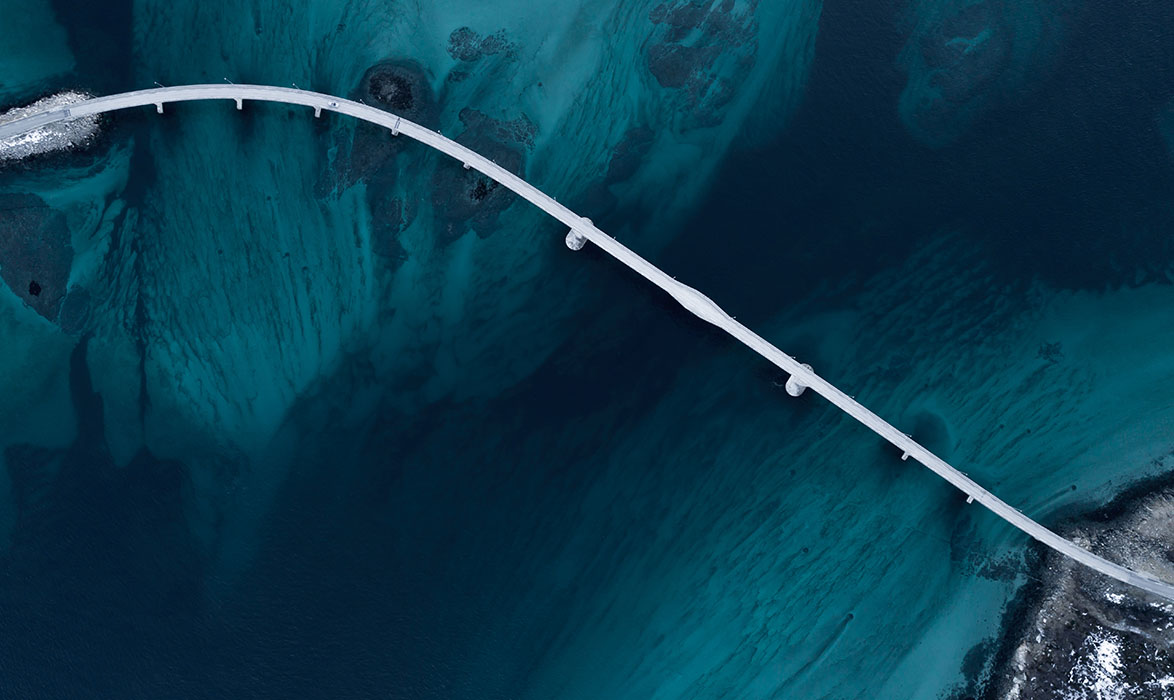Manage your client’s investments
The Sasfin Wealth Investment Platform (SWIP) entrusts independent financial advisors with the tools and capabilities to invest towards the financial futures of their clients. We partner with advisors who understand that embracing technology is imperative to the future of their business. Our platform is a digital solution which removes the friction of investing into a range of cost-effective investment solutions.
Let's talk

Why Sasfin Wealth Investment Platform  ?
?
Are you looking to enhance your advisory business?
Let's talk
A tax efficient pre-retirement product, which allows you to save towards retirement. You can add to this investment monthly or on an ad-hoc basis.
Who should invest in a retirement annuity?
- Self employed people
- People who do not belong to a company pension or provident fund.
- People who can save in addition to their company scheme contributions (e.g. 15% of bonuses if they are not included in the company scheme).
What are the advantages of a retirement annuity?
- Contributions are tax deductible up to 27.5%% of your income, capped at R350, 000 per annum.
- No income, dividend or capital gains tax within the structure.
- Contributions can be flexible.
- Tailor the portfolio to your unique needs and preferences.
What are the drawbacks of a retirement annuity?
- You cannot access your money before age 55.
- There are limits to your exposures. The main limits are maximums of 75% in equity, 25% in property & 30% in global investments.
- You have limited choices after retirement.
What are my options at retirement with a retirement annuity?
- You can choose to retire from the age of 55, but not obligated to.
- You may withdraw 1/3rd of the value at retirement. The first R500 000 is tax free.
- You must buy a regular income stream (annuity) with the balance.
- You can either choose a guaranteed annuity (life annuity) or a living annuity.
- A living annuity offers more flexibility and choice of income but this income is not guaranteed. An income of between 2, 5% and 17, 5% of the value of the investment can be drawn per year.
- If you’re total value in the retirement annuity fund is R247, 500 or less, the full amount can be withdrawn as a lump sum.
What happens on death with a retirement annuity?
- If you have nominated beneficiaries then the value of your investment will be paid to them. This is, however, not cast in stone as the Trustees of the Fund are obliged to review your dependants and may override your nominations.
- The investment does not form part of your estate for estate duty purposes.
What happens in case of divorce with a retirement annuity?
- This investment can form part of a divorce settlement.
- Settlement is mainly dependent on your marital regime.
- Your spouse usually receives a percentage of the pension interest.
- The pension interest can be substantially lower than the market value of your investment. The pension interest is the sum of your contributions up to the date of divorce, plus simple interest at a prescribed rate.
- Your spouse may choose to either keep the funds invested in a retirement annuity or transfer proceeds to a living or life annuity if they need income.
- Any income received by your spouse is taxed in their hands.
What happens if I emigrate with a retirement annuity?
- If you emigrate, you can withdraw the full investment value. You will pay tax according to a tax table.
Risk strategies
Conservative risk strategy
You would rather have low returns that at times may not even beat inflation to minimise your chances of making any losses. This is not a common long term investment strategy and can seriously jeopardise your ability to attain your long term investment goals.
Moderately conservative risk strategy
You would rather have low returns that at times may not even beat inflation to minimise your chances of making any losses. This is not a common long term investment strategy and can seriously jeopardise your ability to attain your long term investment goals.
Moderate risk strategy
You are looking for moderate returns and understand that you are likely to experience losses at times, but are uncomfortable with these being substantial (although there is still a possibility). There will be years of strong returns but to a lesser extent.
Moderately aggressive risk strategy
You are looking to maximise returns and understand that there will be times when your portfolio will suffer losses (sometimes substantial losses). However, you also expect years where you will make substantial returns to more than offset any loss making periods.
Aggressive risk strategy
You are looking to maximise returns and understand that there will be times when your portfolio will suffer losses (sometimes substantial losses). However, you also expect years where you will make substantial returns to more than offset any loss making periods.
Who should invest in a preservation fund?
- Anyone who changes employment (before the age of 55) and needs to transfer an existing provident or pension fund investment.
What are the advantages of a preservation fund?
- No tax is payable on the transfer of provident/pension to a preservation fund.
- No income, dividend or capital gains tax is payable within the structure.
- It's ideal for individuals that may need access to capital as you can make one withdrawal up to the full value before retirement. The withdrawal will be taxed according to a tax table.
- You can tailor the portfolio to your unique needs and preferences.
What are the drawbacks of a preservation fund?
- No further contributions are allowed. A separate retirement annuity can be started for ongoing contributions towards retirement.
- There are limits to your exposures. The main limits are maximums of 75% in equity, 25% I property & 30% in global investments.
What are my options at retirement with a preservation fund?
Preservation Pension Fund
- You can choose to retire from the age of 55, but not obligated to.
- You may withdraw 1/3rd of the value at retirement. The first R500 000 is tax free.
- You must buy a regular income stream (annuity) with the balance.
- You can either choose a guaranteed annuity (life annuity) or a living annuity.
- A living annuity offers more flexibility and choice of income but this income is not guaranteed. An income of between 2, 5% and 17, 5% of the value of the investment can be drawn per year.
- If your total value in the preservation pension fund is R247, 500 or less, the full amount can be withdrawn as a lump sum.
Preservation Provident Fund
- You can choose to retire from the age of 55, but not obligated to.
- You may withdraw 100% of the value at retirement. The first R500 000 is tax free.
- You must buy a regular income stream (annuity) with the balance should you not withdraw 100%.
- You can either choose a guaranteed annuity (life annuity) or a living annuity.
- A living annuity offers more flexibility and choice of income but this income is not guaranteed. An income of between 2, 5% and 17, 5% of the value of the investment can be drawn per year.
What happens on death with a preservation fund?
- If you have nominated beneficiaries then the value of your investment will be paid to them. This is, however, not cast in stone as the Trustees of the Fund are obliged to review your dependants and may override your nominations.
The investment does not form part of your estate for estate duty purposes.
What happens in case of divorce with a preservation fund?
- This investment can form part of a divorce settlement.
- The settlement value is mainly dependent on your marital regime.
- Your spouse usually receives a percentage of the pension interest. The pension interest can be substantially lower than the market value.
- The pension interest is the sum of your contributions until the date of divorce, plus simple interest at a prescribed rate. Your spouse may choose to either keep the funds invested in a retirement annuity or transfer proceeds to a living or life annuity if they need income.
- Any income received by your spouse will be taxed in their hands.
What happens if I emigrate with a preservation fund?
- If you emigrate you can withdraw the full investment amount but it will be taxed accordingly.
A tax efficient pre-retirement product, which allows you to preserve and grow savings for retirement.
Who should invest in a preservation fund?
- Anyone who changes employment (before the age of 55) and needs to transfer an existing provident or pension fund investment.
What are the advantages of a preservation fund?
- No tax is payable on the transfer of provident/pension to a preservation fund.
- No income, dividend or capital gains tax is payable within the structure.
- It's ideal for individuals that may need access to capital as you can make one withdrawal up to the full value before retirement. The withdrawal will be taxed according to a tax table.
- You can tailor the portfolio to your unique needs and preferences.
What are the drawbacks of a preservation fund?
- No further contributions are allowed. A separate retirement annuity can be started for ongoing contributions towards retirement.
- There are limits to your exposures. The main limits are maximums of 75% in equity, 25% I property & 30% in global investments.
What are my options at retirement with a preservation fund?
Preservation Pension Fund
- You can choose to retire from the age of 55, but not obligated to.
- You may withdraw 1/3rd of the value at retirement. The first R500 000 is tax free.
- You must buy a regular income stream (annuity) with the balance.
- You can either choose a guaranteed annuity (life annuity) or a living annuity.
- A living annuity offers more flexibility and choice of income but this income is not guaranteed. An income of between 2, 5% and 17, 5% of the value of the investment can be drawn per year.
- If your total value in the preservation pension fund is R247, 500 or less, the full amount can be withdrawn as a lump sum.
Preservation Provident Fund
- You can choose to retire from the age of 55, but not obligated to.
- You may withdraw 100% of the value at retirement. The first R500 000 is tax free.
- You must buy a regular income stream (annuity) with the balance should you not withdraw 100%.
- You can either choose a guaranteed annuity (life annuity) or a living annuity.
- A living annuity offers more flexibility and choice of income but this income is not guaranteed. An income of between 2, 5% and 17, 5% of the value of the investment can be drawn per year.
What happens on death with a preservation fund?
- If you have nominated beneficiaries then the value of your investment will be paid to them. This is, however, not cast in stone as the Trustees of the Fund are obliged to review your dependants and may override your nominations.
The investment does not form part of your estate for estate duty purposes.
What happens in case of divorce with a preservation fund?
- This investment can form part of a divorce settlement.
- The settlement value is mainly dependent on your marital regime.
- Your spouse usually receives a percentage of the pension interest. The pension interest can be substantially lower than the market value.
- The pension interest is the sum of your contributions until the date of divorce, plus simple interest at a prescribed rate. Your spouse may choose to either keep the funds invested in a retirement annuity or transfer proceeds to a living or life annuity if they need income.
- Any income received by your spouse will be taxed in their hands.
What happens if I emigrate with a preservation fund?
- If you emigrate you can withdraw the full investment amount but it will be taxed accordingly.
Risk strategies
Conservative risk strategy
You would rather have low returns that at times may not even beat inflation to minimise your chances of making any losses. This is not a common long term investment strategy and can seriously jeopardise your ability to attain your long term investment goals.
Moderately conservative risk strategy
You would rather have low returns that at times may not even beat inflation to minimise your chances of making any losses. This is not a common long term investment strategy and can seriously jeopardise your ability to attain your long term investment goals.
Moderate risk strategy
You are looking for moderate returns and understand that you are likely to experience losses at times, but are uncomfortable with these being substantial (although there is still a possibility). There will be years of strong returns but to a lesser extent.
Moderately aggressive risk strategy
You are looking to maximise returns and understand that there will be times when your portfolio will suffer losses (sometimes substantial losses). However, you also expect years where you will make substantial returns to more than offset any loss making periods.
Aggressive risk strategy
You are looking to maximise returns and understand that there will be times when your portfolio will suffer losses (sometimes substantial losses). However, you also expect years where you will make substantial returns to more than offset any loss making periods.
An exchange-traded fund (ETF) is designed to give you the performance of an equity index, bond index, commodity or some other asset or basket of assets.
Who should invest in an ETF portfolio?
- Anyone already saving their maximum tax-deductible retirement contribution as well as their maximum R33 000 per year tax-free savings contribution, but who would like to save more.
What are the advantages of an ETF portfolio?
- They track the performance of a desired market segment or asset, providing an effective way to diversify your investment.
- They are cost-effective.
- There is no limits on the amount you can invest in local asset types.
- Offshore exposure is possible either through locally listed ETFs that track offshore indexes or through direct investment, which is subject to the limits in your annual foreign investment allowance.
- You are not obligated to withdraw the investment at retirement and there are no restrictions on what you can do with your money once you withdraw it.
What are the drawbacks of an ETF portfolio?
- Contributions are not tax deductible.
- Any income, dividend or capital gains will be subject to tax, which is paid within the structure.
How do I access my money form an ETF portfolio?
- Any amount can be withdrawn at any time.
What happens on death with an ETF portfolio?
- The investment forms part of your estate for estate duty purposes.
What happens in case of divorce with an ETF portfolio?
- This investment can form part of a divorce settlement.
- The settlement mainly dependent on your marital regime.
What happens if I emigrate with an ETF portfolio?
- If you emigrate, you can withdraw the full amount of the local portfolio. You will pay tax according to a tax table.
- In the case of an offshore portfolio, funds do not have to be repatriated. As long as you comply with exchange control, funds can be paid directly to any global bank account in the same name as the account holder.
Risk strategies
Conservative risk strategy
You would rather have low returns that at times may not even beat inflation to minimise your chances of making any losses. This is not a common long term investment strategy and can seriously jeopardise your ability to attain your long term investment goals.
Moderately conservative risk strategy
You would rather have low returns that at times may not even beat inflation to minimise your chances of making any losses. This is not a common long term investment strategy and can seriously jeopardise your ability to attain your long term investment goals.
Moderate risk strategy
You are looking for moderate returns and understand that you are likely to experience losses at times, but are uncomfortable with these being substantial (although there is still a possibility). There will be years of strong returns but to a lesser extent.
Moderately aggressive risk strategy
You are looking to maximise returns and understand that there will be times when your portfolio will suffer losses (sometimes substantial losses). However, you also expect years where you will make substantial returns to more than offset any loss making periods.
Aggressive risk strategy
You are looking to maximise returns and understand that there will be times when your portfolio will suffer losses (sometimes substantial losses). However, you also expect years where you will make substantial returns to more than offset any loss making periods.
Global aggressive risk strategy
The portfolio is designed for the cost conscious investor looking for aggressive global exposure in USD hard currency. Investors can access the solution with a lump-sum investment starting from USD5,000 with additional contributions of any amount thereafter. While the portfolio aims to maintain exposure to all major listed asset-classes, its strategic asset allocation leans heavily towards equities to pursue longer term growth, staying in line with its aggressive risk profile.

Transparent and competitive pricing
Our platform and administration fees are designed to give advisors the power to charge clients for what really matters – sound advice and management.
| Platform Fee (Incl VAT) – Sliding scale | |
|---|---|
First R2 000 000 |
0.35% |
Next R3 000 000 |
0.25% |
Amount above R5 000 000 |
0.15% |
FAQ’s
Please contact SWIP Client Service on 087 365 4888 or swipclientservice@sasfin.com.
Sasfin Wealth Investment Platform (Pty) Ltd (FSP 45334) is 100% owned by Sasfin Wealth. Sasfin Wealth has provided tailored global and local investment offerings to private and institutional clients since 1890.
SWIP has also partnered with DMA (previously known as Saxo Capital Markets SA), a leading international trading and custody platform, and Acravest (Pty) Ltd, a licensed Retirement Fund Administrator (License Number 24/424) and an authorised Financial Services Provider (FSP 43176) in delivering our solutions and ensuring the safe guarding of our clients assets.
Need more information on SWIP?
If you are a wealth manager looking for a cost-effective platform to help you manage your clients’ financial wellbeing, we would like to partner with you.



